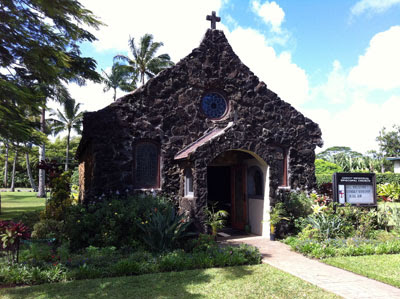Memories of Christmas at Grandma's and Her Lapinha
The holidays at my Grandparent’s
house in Hawai'i were always the highlight of the season – except of course for Christmas
day itself. The whole family would be there. The Christmas tree was a tall
Norfolk Island pine, cut from the tree along side the house. It was decorated
from top to bottom with loads of ornaments and those “magic” bubbling lights.
Grandma would set out a massive Nativity on the dining room buffet – the traditional
Madeiran Lapinha. It was layered on a
few terraced shelves that were covered with one of her favorite linen table clothes and the stable was always right in the middle with a
single star light above the Baby Jesus at the top. The holiday dinner spread included traditional and “modern”
dishes … always a treat.
Grandma was from Madeira, where there is a tradition of creating an elaborate nativity scene, terraced with the Menino Jesus, the Christ Child, at the top.
The Lapinha
was brought to Hawai’i by our Portuguese ancestors who immigrated from Madeira
to the Islands to work on the Sugar Plantations. Today, a few Portuguese
families continue to put up a Lapinha
in the traditional manner.
The following description is from an article by
Sandy
Sakai in 1999:
Although each Lapinha is composed a bit differently, they all share certain
elements. The “stage” upon which the Nativity scene is displayed may consist of
up to seven or more tiers. It can be free standing, placed on a table or built
into the corner of a room. The tiers are covered with a cloth giving it the
appearance of an altar.
The uppermost tier is reserved for the
Christ Child, the Menino Jesus (often large and outsized versus the rest of the display).
Arranged on the tiers below are houses (casas),
candles (velas), angels (anjos), and an assortment of farm
animals including cows (vacas) and
roosters (galos), the symbol of
Portugal. The animals remind us not only of the original Nativity scene but
also the strong relationship the Lapinha
has to the Portuguese farming and peasant communities.
The Lapinha
is completed by decorating it with flowers to give it more color. Small bowls
of sprouted wheat (trigo) are placed on the tiers along with offerings of fruits
(apples and oranges -- porca and laranja) and nuts (maçã).
By tradition, the Lapinha is begun several days before Christmas and the Lapinha is usually displayed until the
Feast of the Three Kings (the Epiphany) which is celebrated on January 6th, after which it is
dismantled and stored until the following Christmas.
I wish I had a photo of Grandma's Lapinha to show you, but alas I do not. Her's was beautiful, elegant and simple. Quietly proclaiming the birth and glory of the newborn Christ. Simple and quiet just like Grandma was. Here are some photos I found online. While these are all traditional and beautiful, Grandma's will always be my favorite Lapinha ever. Have a Merry Christmas.













Comments
Post a Comment